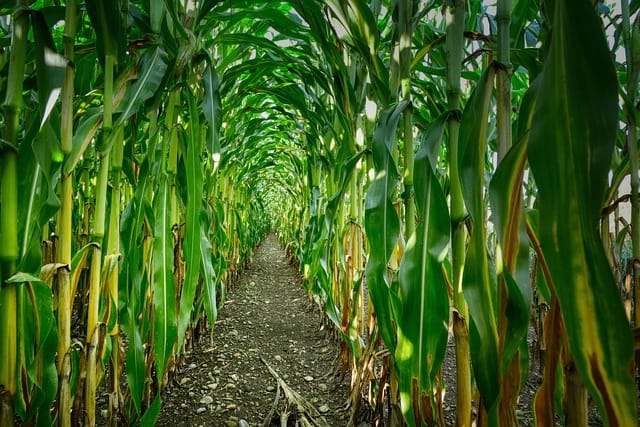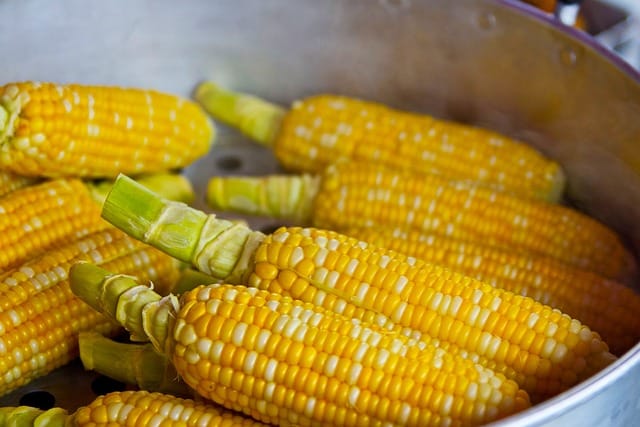Corn, those tall, majestic stalks with their golden ears, are a symbol of summer abundance. There’s nothing quite like sinking your teeth into a freshly picked ear of corn, its sweet juices bursting with sunshine. Growing corn is like bringing a bit of the farm to your own backyard, and it’s easier than you might think!
Imagine strolling through your garden, the tall corn stalks towering over you, and plucking an ear of corn at its peak ripeness. That’s the magic of growing your own! Whether you’re enjoying it on the cob, in salads, or as a tasty side dish, homegrown corn is a summer treat that can’t be beat.

Why Grow Corn?
- Sweet summer goodness: Homegrown corn has a sweetness and flavor that store-bought corn just can’t match.
- Garden showstopper: Corn stalks add height and drama to your garden, creating a living privacy screen.
- Fun for the whole family: Growing corn is a great way to get kids excited about gardening and healthy eating.
- Versatile veggie: Corn can be enjoyed in countless ways, from fresh on the cob to delicious dishes.
- Attract beneficial insects: Corn plants can attract beneficial insects to your garden, helping to pollinate other plants and control pests.
How to Eat Corn:
- On the cob: The classic way to enjoy corn, grilled, boiled, or roasted.
- Salads: Add corn kernels to salads for a burst of sweetness and color.
- Side dishes: Create delicious corn-based side dishes like creamed corn or corn fritters.
- Soups and stews: Corn adds sweetness and texture to soups and stews.
- Salsa and dips: Add corn to your favorite salsa recipes or create a delicious corn and black bean dip.
Growing Corn:
Corn is a warm-season annual that thrives in hot weather.
- Sow seeds directly into the ground after the last frost, in a sunny location with well-drained soil.
- Space seeds about 12-18 inches apart in rows that are 3 feet apart.
Watering:
- Water regularly, especially during dry periods, to keep the soil consistently moist.
Fertilizing:
- Corn is a heavy feeder, so fertilize it regularly with a balanced fertilizer.
Light Requirements:
- Corn needs at least 6-8 hours of sunlight per day.
- Corn is wind-pollinated, so it’s best to plant it in blocks rather than single rows to ensure good pollination.
Harvesting:
- Harvest corn when the silks are dry and brown and the kernels are plump and milky.
- Gently pull the ear of corn down and away from the stalk.
Tips and Tricks:
- Mulch around the plants to help retain moisture and suppress weeds.
- Rotate your corn crops each year to prevent diseases.
- Protect your plants from pests like raccoons and birds by using netting or other deterrents.
- For a continuous harvest, plant corn in succession every few weeks.

Corn Cuisine:
Corn is incredibly versatile in the kitchen. Here’s a simple recipe to get you started:
Grilled Corn on the Cob:
- Ingredients:
- Ears of corn, shucked
- Olive oil
- Salt and pepper to taste
- Instructions:
Nutritional Value of Corn:
(Based on data from the USDA FoodData Central. This is for 100g of yellow sweet corn kernels, raw.)
| Nutrient | Value |
|---|---|
| Calories | 86 |
| Protein | 3.4g |
| Carbohydrates | 18.7g |
| Fiber | 2.7g |
| Vitamin C | 6.8mg |
| Thiamin | 0.2mg |
| Magnesium | 37mg |
Corn is a good source of fiber, thiamin, magnesium, and vitamin C. It also provides some protein and other essential nutrients.
Summary and Conclusion:
Corn, with its sweet flavor, majestic appearance, and culinary versatility, is a summer garden staple that’s sure to delight. Whether you’re a seasoned gardener or just starting out, you’ll find that growing corn is a fun and rewarding experience. So get out there, plant some corn, and enjoy the taste of summer sunshine in every bite!
Disclaimer: This post is for informational purposes only and should not be construed as health, wellness or nutrition advice. Please see our full disclaimers here.
« Back to Glossary Index
